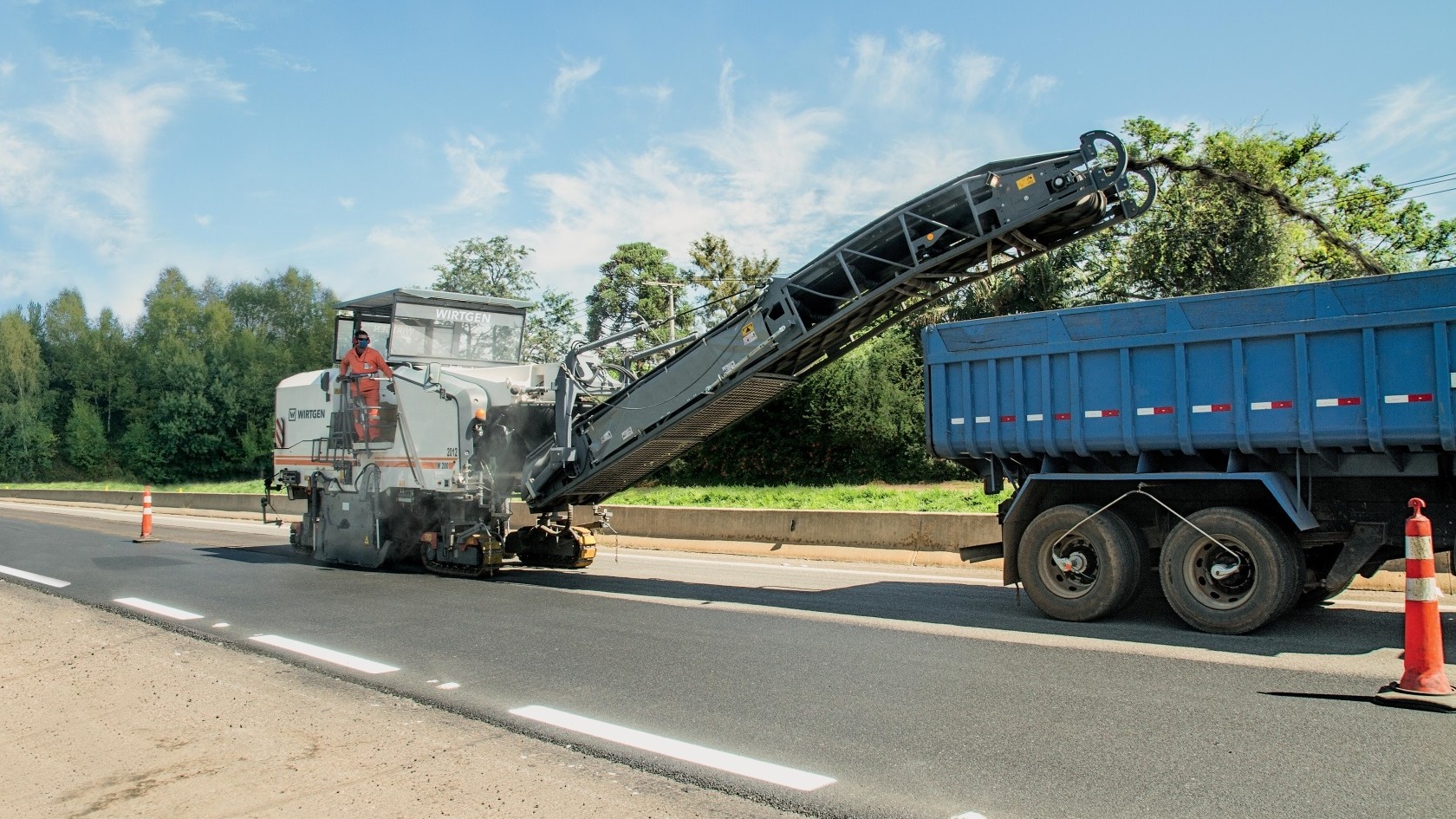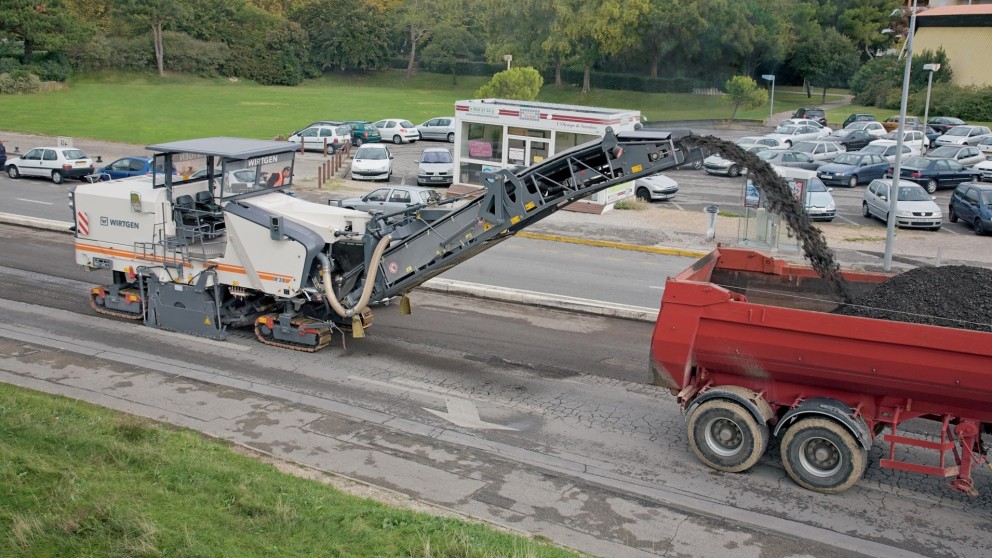Paving Thin Layers Cold


More commonly known internationally as microsurfacing, the process of paving thin layers cold extends the life of damaged asphalt surfaces without the need to replace them.
A slippery road surface, ruts that have formed in the pavement, or bulges and deformations covering the road surface – all of these pose a serious traffic safety risk. The process of paving thin layers cold is increasingly being used to restore a road surface with excellent grip and flatness.
Cold milling machines with fine milling drums first prepare the road surface for application of the thin overlay. The resultant fine profile of the milled roadway creates an ideal substrate with which the micro-surfacing can engage. The "valleys" of the fine-milled profile securely engage the layers of the micro-surfacing, thus producing a perfect layer structure. Thin layers paved cold on cold provide a cost-effective as well as quick solution. The thin wearing course can be paved from a mobile site and the road reopened to traffic within a short space of time.
Paving thin layers cold and the preliminary milling work is a cost-effective method of restoring the road’s grip.
After the milling machines with fine milling drums have completed their preparatory work, the mix used in the process is produced directly on site using self-propelled mixing and spreading machines. It consists of a mineral mixture of staggered grain sizes from 3 to 8 mm, polymer-modified cationic bitumen emulsion, cement, and water. When paving thin layers cold, the mix is spread in two layers over the entire lane. The first layer is the profile, the second the surface layer.
Mixing and spreading machines distribute the mix for the thin cold layer over the fine-milled surface with Vario screeds.
The strained financial situation of public authorities is making it increasingly difficult to carry out complex and cost-intensive complete rehabilitation projects. To maintain the integrity of the road network, alternative methods such as paving thin layers cold are more in demand than ever. Paving thin layers cold is a cost-effective as well as quick solution. The thin layer can be paved as a moving construction site, and the road can be opened up to traffic again after only a short time. In Germany alone, more than 5 million square meters of road surface are repaired each year using the paving thin layers cold method.

